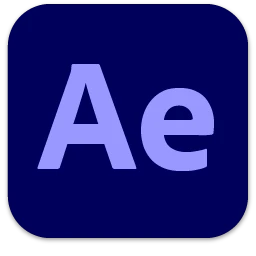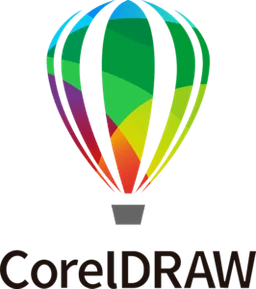Adobe Dimension for Windows is a powerful 3D design and rendering software that allows users to create photorealistic images and product mockups effortlessly. Developed by Adobe Systems, it brings professional-grade 3D modeling tools within reach of graphic designers, marketers, and creatives who want to elevate their projects with three-dimensional visuals. Unlike complex CAD or 3D modeling software, Dimension prioritizes ease of use while maintaining visual sophistication.
Whether you are creating product packaging, branding visuals, or immersive scenes, Adobe Dimension combines 2D and 3D assets to help you deliver compelling images without needing in-depth technical expertise. Its intuitive interface and seamless integration with other Adobe Creative Cloud apps make it an attractive option for Windows users looking to bridge the gap between 2D design and 3D visualization.
Users of Adobe Dimension on Windows benefit from Adobe’s commitment to platform stability and performance optimization, ensuring a smooth experience even when handling complex 3D scenes. its GPU acceleration and support for various rendering techniques add realism and speed up workflows.
In this article, we will explore the features, system requirements, workflow, and use cases of Adobe Dimension for Windows, providing a complete understanding of its capabilities and benefits.
Key features of Adobe Dimension for PC
One of the standout features of Adobe Dimension is its real-time rendering capability, enabling users to see how materials, lighting, and textures affect their models instantly. This interactive feedback minimizes guesswork and accelerates the design process. The software supports lighting presets and allows customizable environment wraps to simulate various realistic scenes with ease.
Dimension provides an extensive libary of 3D models,materials,and lighting assets directly accessible within the app. This rich repository encourages experimentation and creativity without the need to create assets from scratch. Users can import their own 3D models and integrate them seamlessly into their compositions.
The software also excels in integration with Adobe creative Cloud. Designers can import Photoshop or Illustrator assets, preserving layers and vectors, which allows for the creation of detailed and dynamic 3D compositions. Export options include both high-resolution images and 3D files, facilitating use in various media.
Moreover,Adobe Dimension supports advanced camera controls and alignment tools,ensuring precise composition and perspective in designs.Its intuitive drag-and-drop interface and smart guides simplify object placement and scaling, making the software highly approachable for beginners while still useful for professionals.
System Requirements for Adobe Dimension on Windows
Adobe Dimension For PC is designed to run efficiently on Windows machines while leveraging modern hardware capabilities.users should ensure their systems meet the minimum requirements to avoid performance bottlenecks and enjoy smooth rendering experiences.
Minimum system requirements include a 64-bit version of Windows 10 (version 1809 or later), an Intel or AMD processor with multi-core capabilities, and at least 8GB of RAM. while the software can run on lower-end GPUs, having a dedicated graphics card significantly improves rendering speed and visual quality.
For the best results, Adobe recommends a powerful dedicated GPU such as NVIDIA GeForce GTX 1060 or better, with DirectX 12 support. Adequate storage space (minimum 5GB free) is also necessary to install Adobe Dimension and save 3D projects effectively.
Below is a concise compatibility table illustrating minimum and recommended system specifications for running Adobe Dimension on Windows:
| Component | Minimum Requirement | Recommended |
|---|---|---|
| Operating System | Windows 10 (64-bit) | Windows 10 or 11 (64-bit) |
| Processor | Intel core i5 or AMD equivalent | Intel Core i7 or higher |
| RAM | 8 GB | 16 GB or more |
| Graphics | Integrated or entry-level GPU | NVIDIA GTX 1060 / AMD equivalent |
| Storage | 5 GB free | SSD with 20 GB free |
Workflow and Usage Tips in Adobe Dimension
Getting started with Adobe Dimension on Windows begins with importing 3D models or choosing from the included asset library. Users can drag and drop items into the workspace where smart guides help with alignment and positioning. Grouping and layering allow for organized scene management.
Material request is straightforward: simply drag a material swatch onto objects to change their surface properties. Adobe Dimension supports texture mapping and custom decals, enabling realistic branding mockups and packaging designs. Adjusting material properties like glossiness, roughness, and metallic finish is done via intuitive sliders.
Lighting plays a crucial role in achieving realism. Users can choose from preset environments or create custom light setups including point lights, spotlights, and directional lighting. The environment light can be rotated and adjusted to simulate different times of day or indoor/outdoor settings.
For exporting, Adobe Dimension provides options to create high-quality PNG and PSD files with clarity for further editing.Additionally, 3D models can be exported in formats like OBJ or STL for use in other 3D applications or 3D printing. Using these tips,designers can efficiently produce professional results with minimal learning curve exporting.
Use Cases and applications on Windows
Adobe Dimension on Windows serves a wide range of creative and professional purposes. One of its primary uses is in product packaging visualization,where marketers and designers create convincing mockups for presentation and client approval. This reduces the cost and time of producing physical prototypes.
Branding and advertising agencies use Dimension to develop 3D scenes for digital campaigns. The ability to combine 2D artwork with 3D objects results in eye-catching visuals suitable for social media, websites, and video content.Its outputs can be easily incorporated into multimedia projects.
Another important application is in concept visualization. Architects and industrial designers can leverage Dimension to present conceptual models with realistic textures and environmental lighting before moving to detailed CAD software. This helps in communicating ideas efficiently during early design phases.
education and training programs benefit from Adobe Dimension’s approachable workflow as an introduction to 3D design. Students learn the fundamentals of lighting, materials, and composition while producing extraordinary visuals without mastering complex 3D modeling software.
Conclusion
Download Adobe Dimension for Windows is an accessible, versatile 3D design tool that fills the gap between simple graphic design and complex 3D modeling software. Its intuitive interface, real-time rendering, and Creative Cloud integration make it ideal for designers who want to add depth and realism to their projects without steep learning curves.
By meeting Windows system requirements and following efficient workflows, users can create high-quality product mockups, branding visuals, and conceptual scenes that stand out. Adobe Dimension’s growing asset library and export adaptability open up diverse applications across industries, from marketing to education.
adobe dimension represents an excellent solution for Windows users seeking to explore the possibilities of 3D design with professional outcomes and creative freedom. Whether used for commercial projects or learning purposes, it is a dependable and inspiring tool in the modern digital design toolkit.
The game/app Adobe Dimension has been tested and does not contain any viruses!
Updated: 14-05-2025, 13:53 / Price: Free USD / Author: pcomtk







